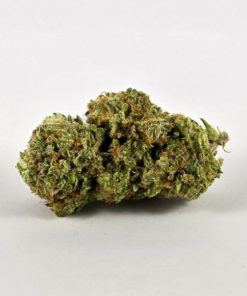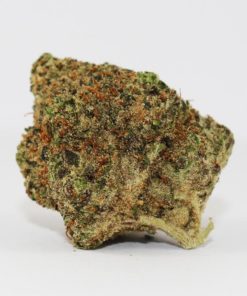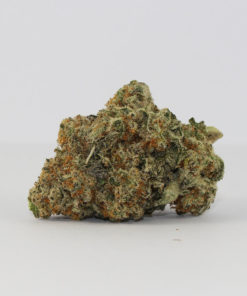Subtotal: $257.00
Guides
Buy Weed Online Alberta
Buy Weed Online Alberta
Buying weed in Alberta, Canada is simple. Before we go in-depth about how you can simply Buy Weed Online Alberta by clicking on our MJN Express menu.
Shopping for weed in Alberta can be difficult, there are not too many places to find top quality fresh bud.
Albertans have been flocking to mail order weed services as a result – it allows them to buy whatever products they need.
From Banff to Edmonton, we’ve got you covered in 2-3 day delivery time.
What is Cannabis?
Cannabis is derived from the cannabis plant (cannabis sativa). It grows wild in many of the tropical and temperate areas of the world. It can be grown in almost any climate, and is increasingly cultivated by means of indoor hydroponic technology.
The main active ingredient in cannabis is called delta-9 tetrahydro-cannabinol, commonly known as THC. This is the part of the plant that gives the “high.” There is a wide range of THC potency between cannabis products.
Cannabis is used in three main forms: marijuana, hashish and hash oil. Marijuana is made from dried flowers and leaves of the cannabis plant. It is the least potent of all the cannabis products and is usually smoked or made into edible products like cookies or brownies (see Factsheet: Marijuana Edibles). Hashish is made from the resin (a secreted gum) of the cannabis plant. It is dried and pressed into small blocks and smoked. It can also be added to food and eaten. Hash oil, the most potent cannabis product, is a thick oil obtained from hashish. It is also smoked.
Cannabis is usually smoked in hand-rolled cigarettes (known as “joints”) or in special waterpipes (“bongs”). These pipes or bongs can be bought or made from things such as orange juice containers, soft drink cans or even toilet rolls.
How Many People Use Cannabis?
Cannabis is the most widely used illicit drug in the United States. According to the 2012 National Survey on Drug Use and Health, 7.3% of Americans aged 12 or older had used marijuana within the previous 30 days. The average age at first use was 17.9 years.
Though use of marijuana among Washington state youth has remained relatively stable over the last several years (see Healthy Youth Survey), youth perception of harm from use of marijuana has been steadily decreasing (meaning: fewer adolescents believe marijuana use is harmful). Marijuana is the second most-commonly used substance among 12th graders (alcohol is the first), with 27% of high school seniors reporting current (past 30-day) use.
Other Names for Cannabis
Cannabis is also known as marijuana, grass, pot, dope, Mary Jane, hooch, weed, hash, joints, brew, reefers, cones, smoke, mull, buddha, ganga, hydro, yarndi, heads and green.
Why Do People Use Cannabis?
Most people who use cannabis do so to experience a sense of mild euphoria and relaxation, often referred to as a “high.” Cannabis causes changes in the user’s mood and also affects how they think and perceive the environment, e.g. everyday activities such as watching the television and listening to music can become altered and more intense.
What Are the Short-Term Effects of Cannabis?
The short-term effects of using cannabis may include:
- Feeling of well-being;
- Talkativeness;
- Drowsiness;
- Loss of inhibitions;
- Decreased nausea;
- Increased appetite;
- Loss of co-ordination;
- Bloodshot eyes;
- Dryness of the eyes, mouth, and throat;
- Anxiety and paranoia.
What Are the Long-Term Effects of Cannabis?
There is limited research on the long-term effects of cannabis. On the available evidence, the major probable adverse effects are:
- Increased risk of respiratory diseases associated with smoking, including cancer;
- Decreased memory and learning abilities;
- Decreased motivation in areas such as study, work or concentration.
Alberta Canada
Alberta, the westernmost of Canada’s three Prairie provinces, shares many physical features with its neighbours to the east, Saskatchewan and Manitoba. The Rocky Mountains form the southern portion of Alberta’s western boundary with British Columbia. Alberta was named after Princess Louise Caroline Alberta, fourth daughter of Queen Victoria. The province is home to the country’s largest deposits of oil and natural gas.
Land and Resources
Physiography, climate, soil and vegetation combine to create four biophysical regions within Alberta. The Prairie region includes most of southern Alberta, more precisely the land south and east of an arc stretching from Waterton in the southwest corner to a point along the Saskatchewan border east of Red Deer. This gently rolling grassland is relatively dry and mostly treeless. The terrain varies locally, in places broken by deep river valleys and rising from less than 300 m in the northeast to over 1,460 m in the Cypress Hills in the southeast. The parkland region predominates in central Alberta, forming a crescent to the west and north of the Prairie region and including most of the North Saskatchewan River drainage basin.
This area varies from the flatland of old lake bottoms to rolling landscape with numerous lakes and depressions. It contains both treed and grassy terrain, with soil and climatic factors favourable to agriculture. The boreal forest region covers the northern half of the province. Here great rivers and lakes dominate the landscape, draining northward to the Arctic Ocean. Soil and climatic factors make agriculture difficult, except in the Peace River region of the northwest, where parkland conditions create the world’s most northerly grain-growing area. West of the plains an area of foothill ridges rise to the Rocky Mountains west of Grande Prairie and along the southern portion of Alberta’s western boundary with British Columbia. Some of Canada’s most spectacular nnmentatural scenery, with several peaks rising above 3,600 m, is found here.
Geology
Alberta’s oldest surface landscape is its extreme northeastern part, east of the Slave and lower Athabasca rivers, where crystalline rocks formed during the Precambrian era (4,000 to 544 million years ago) appear at the surface. This small outcrop of the Canadian Shield does not end in the northeast — its rocks form a basement under the rest of the province, sloping down to 6,000 m in the southwest.
During the Paleozoic era (544 to 250 million years ago) Alberta alternated between dry land and sea, and life evolved from simple plants and animals to vertebrates and dryland vegetation. The decay of this plant and animal life, especially during the Devonian period (410 to 353 million years ago), formed the basis of most of the province’s oil and natural gas deposits.
The Mesozoic era (250 to 65 million years ago) also subjected Alberta to alternating upraisings of the land and infloodings of ocean waters. This was the era of the dinosaurs, the period that bequeathed the badland formations of the Red Deer River valley, and laid down most of the province’s coal resources.
The Cenozoic era (65 million years ago to the present) saw the uplifting of the Rocky Mountains and the establishment of the province’s physiographic framework. About 25,000 years ago the last advance of continental ice scoured the terrain and virtually covered the entire province. Only the highest parts of the Rockies, the Cypress Hills and the Porcupine Hills escaped. The final retreat of the ice age, beginning about 13,000 years ago, created the current river systems and soils.



 Girl Scout Cookies (1 oz)
Girl Scout Cookies (1 oz)  Peanut Butter (1 oz)
Peanut Butter (1 oz)  Ice Wine (1 oz)
Ice Wine (1 oz) 



